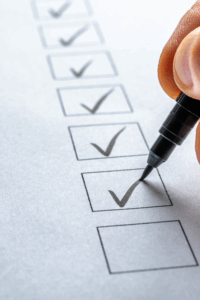5 Ways to Think Clearly to Write Clearly for Your Business
1. State the theme or goal – To write clearly for your business, jot what you want to say and why in one sentence. This sentence may serve as a guide throughout, helping you keep to one topic.

2. Know your reader – Put yourself in their shoes. Marketers often espouse the concept of personas, creating sketches of an average reader. For example, what does your average reader look like? Where do they live? What do they do? Thinking about them can help you refine your concept and the language you’ll use to reach them.
3. Think through it – Consider the 5 W’s and the H of journalism: who, what, when, where, why, and how. As part of critical thinking — based on information gathered from observation, experience, reflection, reasoning, or communication, connect these parts logically to each other, building on each point. Follow a logical progression of ideas. Talking to others about these concepts before you begin can help you clarify your ideas and expose you to other views.
4. Set boundaries – Decide on the format and structure — outline the key points. Or, as prewriting practice, write through your concept in a series of numbered steps. Or pretend you’re writing a Twitter post and break each thought into bullet points or numbers. This can help you arrange your thoughts logically.
5. Prime your mind – Before you write, read pithy prose by Ernest Hemingway, E.B. White, William Zinsser, or the greats in your genre as examples of how to keep it simple.
Is your writing as clear as mud? Find out how to turn your gibberish into everyday English to gain the right clients.
How do you think clearly to write clearly? Feel free to comment below.
Quotes
“Writing is thinking. To write well is to think clearly. That’s why it’s so hard.” ~ David McCullough
“Anyone who can think clearly can write clearly. But neither is easy.” ~ William Feather



